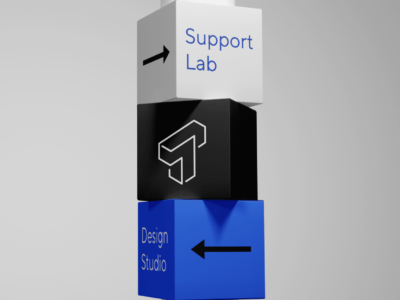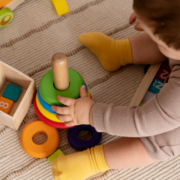
In the realm of app development, the role of a UI/UX designer is paramount in creating engaging and user-friendly digital experiences. However, determining the right budget for hiring a UI/UX designer can be a challenging task, especially for businesses looking to optimize their design processes while managing costs effectively. Let’s explore the key considerations and strategies for determining the appropriate budget for hiring a UI/UX designer:
Understanding the Value of UI/UX Design
UI/UX design plays a crucial role in shaping the user experience and driving user engagement. Investing in a skilled UI/UX designer can significantly impact the success of a digital product, leading to higher user satisfaction, increased retention rates, and improved conversion rates. Recognizing the value that UI/UX design brings to the table is essential when budgeting for hiring a designer.
Assessing Project Scope and Complexity
The complexity and scope of the design project are key factors that influence the budget for hiring a UI/UX designer. Projects with intricate design requirements, multiple user flows, and extensive interactive elements may require a higher budget to ensure the designer can deliver a polished and user-centric design solution. Understanding the project’s scope and complexity is crucial for setting realistic budget expectations.
Evaluating Designer Expertise and Experience
The level of expertise and experience of the UI/UX designer directly impacts the budget for hiring their services. Seasoned designers with a proven track record of delivering successful design solutions may command higher rates compared to junior designers or freelancers. Assessing the designer’s portfolio, skills, and industry experience is essential for determining the appropriate budget allocation.
Considering Design Tools and Resources
UI/UX designers rely on a variety of design tools and resources to create compelling and functional designs. Budgeting for design software licenses, prototyping tools, user testing platforms, and other resources is essential for ensuring the designer has access to the necessary tools to execute the project effectively. Allocating a budget for design resources can enhance the designer’s workflow and productivity.
Factoring in Design Iterations and Revisions
Design projects often involve multiple iterations and revisions to refine the user interface and user experience. Budgeting for design iterations and revisions ensures that the designer has the flexibility to make adjustments based on feedback and testing results. Setting aside a contingency budget for iterations can streamline the design process and lead to a more polished final product.
Seeking Competitive Quotes and Proposals
Obtaining competitive quotes and proposals from multiple UI/UX designers or design agencies can help in determining a reasonable budget range for hiring a designer. Comparing pricing structures, services offered, and project timelines can provide valuable insights into the market rates for UI/UX design services. Requesting detailed proposals and cost breakdowns can aid in making an informed decision regarding budget allocation.
Balancing Cost and Quality
While budget considerations are important, it is crucial to strike a balance between cost and quality when hiring a UI/UX designer. Opting for the lowest-priced designer may compromise the quality of the design deliverables, leading to subpar user experiences. Investing in a designer who offers a competitive rate while demonstrating a strong portfolio and expertise ensures a higher return on investment in terms of user satisfaction and business outcomes.
Determining the right budget for hiring a UI/UX designer involves a strategic approach that considers the value of design, project scope, designer expertise, design tools, iterations, competitive quotes, and cost-quality balance. By carefully evaluating these factors and setting realistic budget expectations, businesses can ensure they allocate resources effectively to secure the services of a skilled UI/UX designer who can elevate their digital products and drive user engagement.
Factors to Consider When Determining the Budget for Hiring a UI/UX Designer
Before delving into the budgeting process, it’s important to understand the role of a UI/UX designer. UI/UX designers are responsible for creating intuitive and visually appealing interfaces that enhance the user experience. They focus on understanding user behavior, conducting user research, and designing interfaces that meet the needs and expectations of the target audience.
Factors to Consider When Determining the Budget
- Experience and Expertise: The level of experience and expertise of the UI/UX designer will have a significant impact on the budget. Highly experienced designers with a proven track record of successful projects may charge higher fees compared to less experienced designers.
- Complexity of the Project: The complexity of your project will also influence the budget. If your project requires extensive research, user testing, and iterative design processes, you may need to allocate a higher budget for hiring a UI/UX designer.
- Scope of Work: The scope of work involved in your project will determine the amount of time and effort required from the UI/UX designer. A larger scope of work will likely require a higher budget to accommodate the designer’s time and resources.
- Timeline: The timeline for your project can also impact the budget. If you have a tight deadline, you may need to hire a designer who can dedicate more time to your project, which may result in higher costs.
- Location of the Designer: The location of the UI/UX designer can also affect the budget. Designers based in regions with a higher cost of living may charge more for their services compared to designers in regions with a lower cost of living.
- Portfolio and References: Reviewing the designer’s portfolio and references can give you an idea of their previous work and client satisfaction. A designer with a strong portfolio and positive references may command higher fees.
- Additional Services: Some UI/UX designers offer additional services such as user testing, prototyping, and ongoing support. These additional services can add to the overall cost of hiring a designer.
Conclusion
In conclusion, determining the budget for hire UI/UX designer requires careful consideration of various factors. By understanding the role of a UI/UX designer and considering factors such as experience, complexity of the project, scope of work, timeline, location, portfolio, and additional services, you can set a realistic budget that meets your project requirements. Remember, investing in a talented UI/UX designer is essential for creating a successful digital product that delights users and achieves your business goals.











